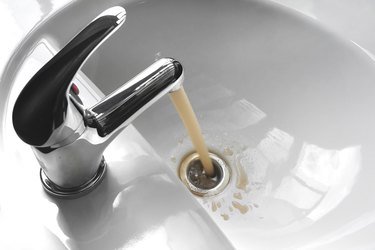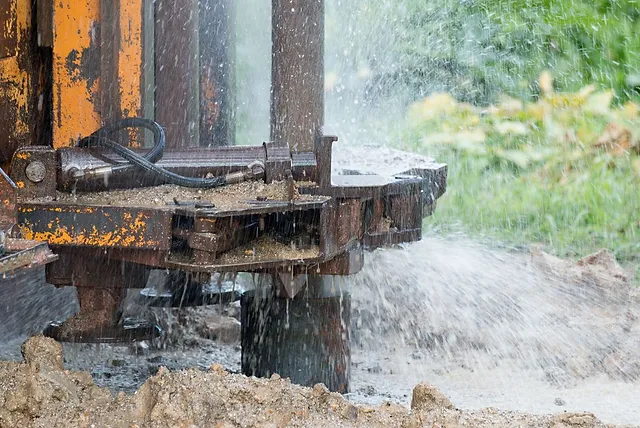In Edgewater, MD, the timeline for water clarity in a new well can vary based on several factors. Typically, after the completion of well drilling and installation, it may take anywhere from a few days to several weeks for the water to clear up. Factors influencing this timeline include the depth of the well, geological conditions, and the presence of any contaminants or sediments in the groundwater. Additionally, A.C.E. Plumbing and Home Services LLC will tell you the use of proper filtration and treatment systems by understanding these factors will crucial for homeowners and well drillers to ensure the timely and safe establishment of a new well in Edgewater, MD.
Initial Turbidity:
Initially, after installing a new well in Edgewater, MD, the water may appear cloudy due to sediment stirred during drilling. This turbidity gradually improves over days as sediment settles. Techniques like well surging aid sediment removal for faster clearing. Professionals recommend allowing time for natural settling and may employ methods to expedite the process. Importance of a Well-Defined Scope of Work Ultimately, ensuring water meets safety standards may require additional treatment. Thus, while initial turbidity is common, achieving consistently clear, safe water necessitates patience and potentially, intervention.
Immediate Clarity:
Immediately after installing a new well in Edgewater, MD, the water may display signs of clarity improvement as sediment begins to settle. Despite initial turbidity caused by drilling activities, some sediment settles quickly following installation. This initial clarity improvement typically occurs within the first few days, providing an indication of the eventual water quality. However, achieving complete clarity and ensuring the water meets safety standards may still require additional time and monitoring. Professionals may recommend allowing the settling process to continue naturally or employing techniques such as well surging to expedite the clearing process.

Settling Time:
The settling time for a new well in Edgewater, MD, varies depending on factors such as well depth and sediment volume. After installation, sediment stirred up during drilling gradually settles, influencing water clarity. This settling process typically spans several weeks, during which the water gradually clears as suspended particles settle to the bottom. The duration may be affected by environmental factors like rainfall or groundwater flow. Professionals may recommend allowing sufficient time for natural settling before assessing water quality. Techniques such as well surging may be employed to accelerate the process, ensuring that the water meets safety standards for consumption.
Water Testing:
- Importance: Water testing is crucial to ensure the safety and quality of the water supply from a new well.
- Comprehensive Analysis: Testing involves analyzing the water for various parameters, including pH levels, mineral content, bacteria, and potential contaminants.
- Safety Standards: The testing aims to determine if the water meets safety standards set by local health authorities and regulatory agencies.
- Initial Testing: Initial testing should be conducted shortly after the well is installed to establish a baseline water quality.
- Regular Monitoring: Regular testing is recommended to monitor any changes in water quality over time and to ensure ongoing compliance with safety standards.
- Testing Frequency: The frequency of testing may vary depending on factors such as well construction, location, and any potential sources of contamination nearby.
- Certified Laboratories: Water samples should be analyzed by certified laboratories capable of performing comprehensive testing and providing accurate results.
- Interpretation of Results: Results should be interpreted by qualified professionals who can provide guidance on any necessary actions, such as treatment or mitigation measures, based on the findings.
- Public Health Protection: Water testing is essential for protecting public health and ensuring that the water supply is safe for drinking, cooking, and other household uses.
- Documentation: Records of water testing results should be maintained for future reference and compliance purposes.
By following these points, homeowners can ensure that their new well in Edgewater, MD, provides safe and clean water for their needs.
Treatment Options:
When considering treatment options for a new well in Edgewater, MD, several factors come into play to ensure the water is safe for consumption. Treatment methods aim to address specific issues identified through water testing, such as high mineral content, Signs of bacterial contamination in well water, or the presence of chemical contaminants. Common treatment options include filtration systems to remove sediment and particulates, UV sterilization to eliminate bacteria and pathogens, and water softeners to reduce hardness caused by minerals like calcium and magnesium. Additionally, chlorination or other chemical treatments may be necessary to disinfect the water and ensure it meets safety standards. The choice of treatment depends on the specific characteristics of the water and the desired quality standards. Consulting with water treatment professionals can help homeowners select the most effective and appropriate treatment options for their new well. Regular maintenance and monitoring are essential to ensure that treatment systems continue to operate effectively and provide clean, safe water for household use.

Environmental Factors:
Environmental factors play a significant role in the quality and clarity of water from a new well in Edgewater, MD. Factors such as weather conditions, nearby land use activities, and geological features can all influence the water’s composition and potential contaminants. For instance, heavy rainfall can lead to runoff, introducing sediment, chemicals, and other pollutants into the groundwater. Similarly, agricultural or industrial activities in the vicinity may contribute to contamination through runoff or leaching of chemicals into the groundwater. Additionally, geological features such as the presence of limestone or shale formations can affect water quality by influencing mineral content or the potential for natural filtration. Understanding and mitigating these environmental factors are crucial for ensuring the long-term viability and safety of the water supply from a new well. Regular monitoring and appropriate management practices can help mitigate the impact of environmental factors and maintain water quality standards.
Professional Advice:
Seeking professional advice is paramount when establishing a new well in Edgewater, MD, to ensure optimal performance and water quality. Licensed well contractors and water quality experts possess the knowledge and experience necessary to guide homeowners through every step of the process, from well site selection to installation and ongoing maintenance. These professionals can assess factors such as geological conditions, local regulations, and potential sources of contamination to recommend the most suitable well design and treatment options. Additionally, they can provide valuable insights into testing protocols, interpreting results, and implementing effective mitigation measures if water quality issues arise. By relying on professional advice, homeowners can make informed decisions that safeguard the health and integrity of their water supply for years to come.
Well Development Process:
- Pre-Drilling Assessment: Before drilling begins, a thorough assessment of the site is conducted to determine factors such as geology, water table depth, and potential sources of contamination.
- Drilling: Once the site is selected, drilling equipment is used to bore into the ground to access the aquifer or water-bearing layer.
- Well Casing Installation: After drilling, a casing made of durable material such as steel or PVC is inserted into the borehole to prevent collapse and protect the well from external contamination.
- Gravel Packing: A layer of gravel is often placed around the casing to provide structural support and facilitate the flow of water into the well.
- Well Development Techniques: Various techniques, such as surging, jetting, or pumping, are employed to remove drilling fluids, sediment, and other debris from the well and surrounding formation.
- Aquifer Testing: Aquifer tests may be conducted to assess the well’s yield and the characteristics of the water-bearing formation.
- Well Rehabilitation: In some cases, older or underperforming wells may require rehabilitation techniques such as high-pressure jetting or chemical treatments to improve water flow and quality.
- Finalization: Once the well development process is complete, the well is equipped with a pump and any necessary components to begin supplying water to the surface.
By following these steps, the well development process ensures the successful establishment of a reliable and sustainable water supply from the aquifer.

Geological Conditions:
Geological conditions play a crucial role in determining the feasibility and performance of a well in Edgewater, MD. The geological makeup of an area influences factors such as the depth and quality of the aquifer, as well as the potential for groundwater contamination. Well Cleaning: understanding arsenic contamination risks, in Edgewater, MD, geological formations may include layers of sedimentary rock, such as sandstone or limestone, which can act as natural reservoirs for groundwater. Understanding these formations is essential for locating suitable drilling sites and predicting the quantity and quality of water that a well can yield. Additionally, geological conditions can impact the potential for groundwater contamination from sources such as nearby septic systems, industrial activities, or agricultural runoff. By considering geological factors during site selection and well design, homeowners and well contractors can optimize the performance and longevity of wells while minimizing the risk of water quality issues.
FAQ’s:
How long should you flush a new well?
Flush a new well for at least 1-2 hours to remove sediment and ensure water clarity and quality.
How do I clear up water in my new well?
To clear up water in a new well, allow sediment to settle for several days, then flush the system and install appropriate filtration if needed.
Why isn’t my well water clear?
Your well water may not be clear due to sediment stirred during drilling, high mineral content, bacterial contamination, or other environmental factors.
Is it safe to drink water from a new well?
It’s generally safe to drink water from a new well once it has been tested and confirmed to meet safety standards.
How do you purify well water naturally?
You can purify well water naturally by boiling, using sunlight (solar disinfection), or adding purification plants like neem or moringa seeds.
CONCLUSION:
In conclusion, the timeline for water clarity in a new well in Edgewater, MD, varies but typically spans several weeks. Initially cloudy due to sediment stirred during drilling, the water gradually clears as sediment settles, influenced by factors like well depth and sediment volume. Techniques such as well surging expedite sediment removal. Professionals advise allowing time for natural settling and may employ interventions for faster results. Achieving consistently clear, safe water requires patience and potentially additional treatment. Regular monitoring ensures water meets safety standards. Ultimately, while initial turbidity is common, diligent attention and possibly professional intervention lead to reliably clear and safe water.
